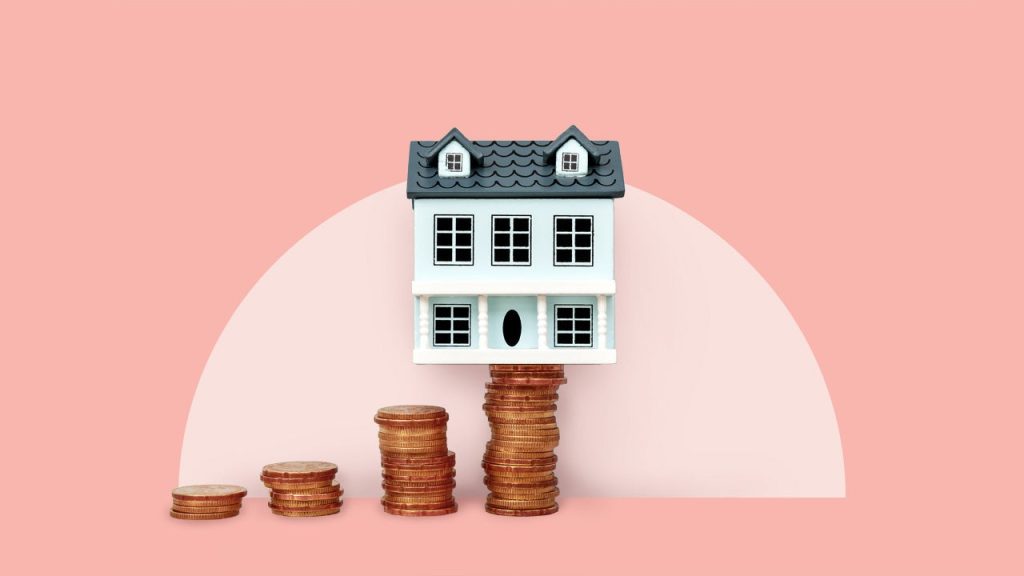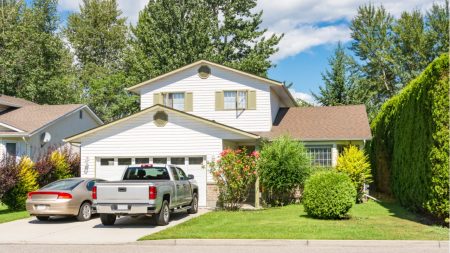Image by GettyImages; Illustration by Bankrate
Home equity lines of credit (HELOCs) continue to become more affordable this year. The average rate on a $30,000 HELOC dropped two basis points to 8.01 percent, its lowest level since 2023, according to Bankrate’s national survey of lenders. Meanwhile, the average $30,000 home equity loan held steady at 8.37 percent for a third week in a row, its lowest level this year.
Matt Vernon, head of consumer lending at Bank of America, says consumers stand to benefit as home equity rates fall to new lows and the amount of equity held by homeowners climbs, due to rising property values. “Not only has it [the cost of home equity financing] come down versus where it was, there’s also the opportunity for it to come down in the quarters and the months ahead. Home values have continued to increase over the past three, four, or five years post-pandemic. That means there’s more equity in the market than there’s historically been.”
| Current | 4 weeks ago | One year ago | 52-week average | 52-week low | |
|---|---|---|---|---|---|
| HELOC | 8.01% | 8.12% | 9.01% | 8.84% | 8.01% |
| 10-year home equity loan | 8.50% | 8.54% | 8.73% | 8.62% | 8.46% |
| 15-year home equity loan | 8.44% | 8.48% | 8.70% | 8.58% | 8.37% |
| Note: The home equity rates in this survey assume a line or loan amount of $30,000. | |||||
What’s driving home equity rates today?
HELOCs and home equity loans are down substantially from the highs reached at the beginning of 2024, with HELOC rates hitting lows not seen in two years. Greg McBride, Bankrate’s chief financial analyst, forecasts that rates will continue to decline in 2025, especially those of HELOCs. They will average 7.25 percent, he thinks — which would be their lowest level in three years.
The demand for HELOCs and HELoans is being driven by two factors: lender competition — as banks and mortgage companies try to attract applicants with low-for-a-limited-time loan terms — and the Federal Reserve’s actions. The central bank cut interest rates three times in late 2024, and indicated cuts would continue this year. It did hit the breaks on rate cuts at its first two meetings of 2025, though, moving cautiously as it keeps an eye on inflation and the unemployment rate. Also, in the backdrop, there are growing concerns about a slowdown in the U.S. economy.
“We’re expecting somewhere between zero and two rate decreases for 2025 and then perhaps a similar perspective for 2026,” says Vernon. “Over the next month, as we begin to digest a lot of the variables from an economic perspective, be it tariff impacts, deregulation, immigration, housing, workforce and unemployment, we will get a better feel for that [Fed prediction].”
What influences home equity rates?
Several factors can influence interest rates on HELOCs and new home equity loans. That includes the prime rate, which is tied to Federal Reserve monetary policy. When the Fed raises rates, borrowing costs on equity-based loans tend to go up. The opposite tends to happen when it lowers rates.
To be sure, the Fed’s moves influence interest rates on a variety of credit products. However, because HELOCs and home equity loans are linked to your home as collateral, those rates tend to be much less expensive — more akin to current mortgage rates — than the interest charged on credit cards or personal loans, which aren’t secured.
Current home equity rates vs. rates on other types of credit
The Fed’s monetary policy influences interest rate trends overall and the rates lenders advertise. Of course, the individualized offer you receive on a particular HELOC or new home equity loan reflects an additional factor: your creditworthiness — specifically your credit score and debt-to-income ratio. Then there’s the value of your home and your ownership stake, especially vis-à-vis the amount you want to borrow. Lenders generally allow all your home-based loans (including your mortgage) to be 80 to 85 percent of your home’s worth.
Some people may be more conservative in tapping their equity, since what’s paramount is “paying off the loan as fast as they can,” says Fred Bolstad, head of retail lending at U.S. Bank. “For other people, it’s all about [increasing] cash flow, and so they want to leverage their home to the fullest.”
Read the full article here









